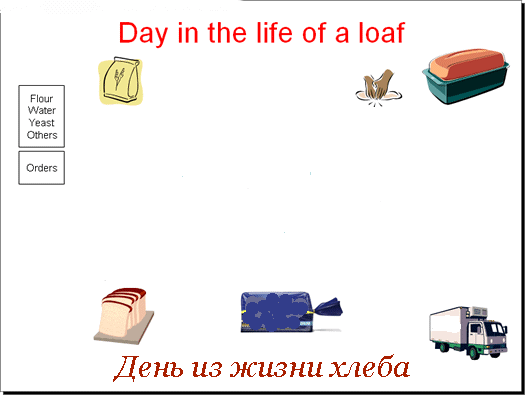Abstract
for masters project
«The moisture meter of dough semi-finished products»
Taking into the new stage of Ukraine and west countries’ relations, our country encounters some legal and economic obligations, and as a result, control after products quality in all industrial and food industries increases.
The themes of master's project is devoted to the area of bakery production. The parameters of bread quality come from a research object: moisture of dough semi-finished products, being certainly influenced by atmospheric pressure, a temperature and moisture in the technological process apartment. The non-observance of norms with mentioned parameters conduces to the receipt of subzero quality products and as a result - to the material losses.
One of major parameters, influencing on a crumb formation and determined on the primary stage, is moisture of dough semi-finished products. The level of moisture must correspond to the State Standard norms [1], then crumb will not lose necessary biomatters, fluffiness, flavour, will be done and will provide the designated product yield.
A technological process of bread production consists of the responsible stages [2] (fig.1):

Figure 1 - The bread baking technological process (animation, 5 frames, 3 recycles, 112 kB)
The moisture (mass) W [3] is considered as correlation of moisture masses M, contained in a body, with moist material mass М1:
Moisture is measured by the special devices [4,5], which are divided by psychrometers, hygrometers, balance moisture meters, conductometric moisture meters, dielcometer moisture meters, moisture meters of nuclear magnetic resonance and other depending on a method, fixed in basis of their work. The most wide-spread are industrial methods [6], that based on a physical or chemical division of moisture and dry material, determination of their balance or by volumetric analysis. However a basic defect is impossibility of using these methods as an informative link in automatic control and continuous technological processes control, and also in research of moisture exchange processes and moisture to material form connection change.
During informational searches the prototype device was found [7].
It supposes:
- the necessity of analyzable semi-finished product extraction from a continuous technological process;
- the absence of the objective fixing moment of the moisture complete moving away in the drying process;
- the necessity of the repeated measuring realization (during a technological process);
- the insufficient probability of result.
Scientific novelty. Among all known moisture measuring devices, there is no such a device for controlling moisture in real time. The device for moisture determination - ВНИИХП-ВЧ by Chijeva is considered as a prototype, however another control method will be offered. It is based on the laws of physics and mathematics. Therefore there are substantial differences:
- Method of moisture determination and control.
- The device ВНИИХП-ВЧ by Chijeva does not function in real time for rapid moisture determination.
- The device control is selective for all dough stream and it is carried out several times (the bread output control, estimations of intermediate product and at the recipe verification).
- The offered sensor is simple in the use and has high accuracy.
The sensors of this type [9] are used for time-falling fixing of dough semi-finished product. The gages differ with a compactness and high accuracy.
The influence of atmospheric pressure on moisture dough semi-finished products. The moisture of bodies is determined by water presence as a steam [10]. The steam amount depends on partial pressure of aquatic steams, for example in the air at this temperature and atmospheric pressure, that testifies about the atmospheric pressure influence on dough products moisture. Let’s follow such a plot by means of formula (7): By P1=79993.2 Pа, P2= 86659.3 Pа, P3= 93325.4 Pа, P4= 99991.5 Pа, P1= 106657.6 Pа; t = 20 ms, g = 9.80665 m/s2 , ρsv =1420 kg/m3 , ρ =1.6 kg/m3, Т=24 °С, S=0.1 m.
Next dependence (fig. 3) is got:

Figure 3 – The atmospheric pressure influence on dough semi-finished products moisture
Effect of ambient temperature on dough products moisture. Using the same mathematical tools, but changing the temperature in the room we can get a characteristic dependence of moisture and temperature. By P700= 93325.4 Pа, t = 20 ms, g = 9.80665 m/s2 , ρsv =1420 kg/m3 , ρ =1.6 kg/m3, S=0.1 m, however Т1=10 °С, T2=15 °C, T3=20 °C, T4=25 °C, T5=30 °C, T6 = 35 °C, T7=40 °C, T8 = 45 °C.
Next dependence is got (Fig. 4):

Figure 4 – The temperature influence on dough semi-finished products moisture
The graph shows that the temperature in the technological space is inversely affects the moisture, so, while temperature increases there is a reduction of the dough moisture percentage. When the temperature varies from 10 °C to 45 °C moisture decreases by 16.6%.
Literature
- Зверева Л.Ф. Технология и технохимический контроль хлебопекарного производства. — М., 1983 — 48 с. — http://narakeshvara.livejournal.com/243367.html
- А. Экерт. Выпечка хлеба. - М., 1996 — 236 с.
- Музалевский В. И. Измерение влажности древесины. — М.: Лесная промышленность, 1976. — 120 с., ил.
- Кричевский Е.С. Теория и практика экспрессного контроля влажности твердых и жидких материалов/ Кричевский Е.С., Бензарь В.К., Венедиктов М.В. — М.: Энергия, 1980. — 240 с., ил.
- Богачук В.В. Методи та засоби вимірювального контролю вологості матеріалів. — Вінниця, 2008.
- Берлинер М.А. Измерение влажности. — М.: Энергия, 1973 — 400 с., ил.
- Aуэрман Л.Я. Технология хлебопекарного производства. — М.: Легкая и пищевая промышленность, 1984. — 415 с.
- Чичикало Н.И. Алгоритмические принципы построения напряженно-деформированных объектов. — Донецк.: РИА ДонГТУ, 1998. — 158 с.
- Криворученко А. Бесконтактные датчики положения механизмов.// Компоненты и технологии. 2007. №1. с. 24-28 — http://electricalschool.info/main/drugoe/190-beskontaktnye-datchiki-polozhenija.html
- Кричевский Е.С. Контроль влажности твердых и сыпучих материалов.— М.: Энергия, 1986. — 182с.
